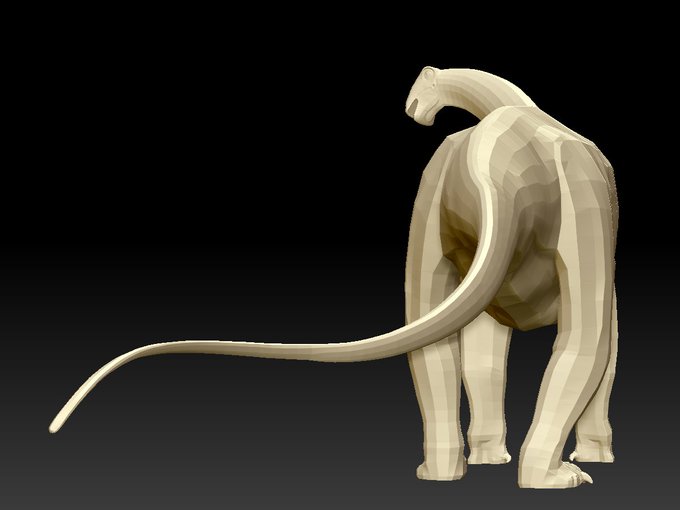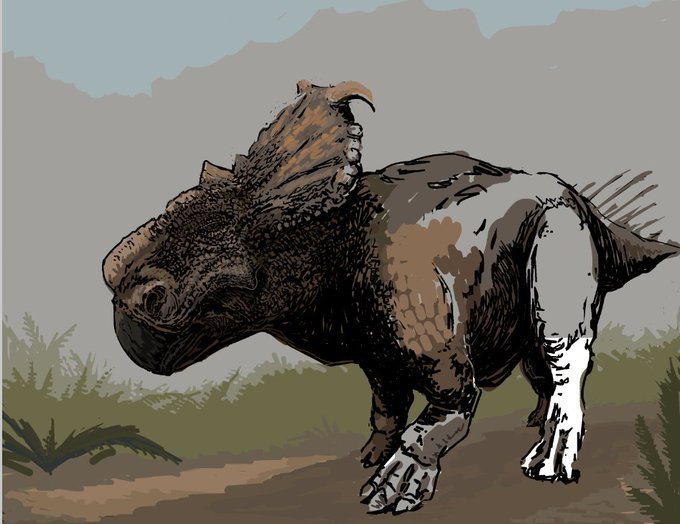FOSSILFRIDAYのTwitterイラスト検索結果。 1,209 件中 37ページ目
#Ontogeny #FossilFriday! This display @SamNobleMuseum shows a growth series of claws and thigh bones (femora) from the Jurassic dinosaur Allosaurus! This is why we love to have lots of specimens of the same species—we can learn tons about how these bones changed, inside and out!
The body of today's holocephalans (chimaeras+) are mostly naked, and those few scales they do have are small denticles like those of sharks. Some of their early relatives however, like this Deltoptychius from the Carboniferous, had pretty substantial head-armour #FossilFriday
"Houston...We have a PROBLEM🦖
Happy #FossilFriday!
#humour
[credits: artist unknown]
Pachyrhinosaurus #paleoart as suggested by @Jonpeterahlstr1
Happy #FossilFriday folks!
Updated the Tarbosaurus growth series. Happy final hours of #fossilfriday to you americans.
02/28/2020 - 40 Acre Blues by Serena Romero #dinosaurs #FossilFriday #FunFactFriday #pigeons
What better way to conclude #FossilFriday than to have a pre-flight toast with two of my favorite AMNH artists? They make fossils come to life in ways words cannot. 📸 Leptarctus by Nicole Wong, Sinornithosaurus by Mick Ellison, both @AMNH #sciart
Submitting my 2nd entry to the @MarineRepConf #palaeoart exhibition for #FossilFriday ! This Archelon Ischyros commissioned by @Pacificklaus is sdepicted alongside Saurornitholestes, Claosaurus and Ichthyornis. #MarineRepConf #PhotoComp
We welcome @miawroe from @omnisterra1 for her first guest #article. #UnlockingThePast this #FossilFriday as we venture into the #Devonian, seeing how life further terrestrialised and why this was the Age of #Fish: https://t.co/ScM70cWII5
Some Mosasaurus #paleoart for #FossilFriday. And no, we don't know that they had dorsal fins, but we don't know that they didn't either - the right parts of their soft tissues have not, to my knowledge, been preserved to indicate either way.
This #FossilFriday we're loving 😍 the beautiful illustrations of Liassic fossils from Stanford's Geological Atlas of Great Britain, 1904. #maps
Some classic dinos for this #FossilFriday, including my childhood fave Triceratops, courtesy of my recent and unexpected trip to @DenverMuseumNS I’m guessing all of you know what these all are already ...
Happy #ValentinesDay/#FossilFriday! We still don’t know how Radiodonts reproduced, but it probably started (at least in some species) during mass-moulting events, when large numbers of them got together to moult. See fossils of #Cambroraster, for example. (1/2)
#Paleontology
Some new #paleoart for #FossilFriday: my take on Yutyrannus published in entirety for the first time this week. It was created for LTTAII, but that's coming out soon enough to let the covers slip a little on the art. A short thread about this image...
Australopithecus boisei was so romantic 1.6 million years ago, that its spinal cord exited the skull through a heart-shaped foramen magnum #ValentinesDay #FossilFriday
Dedicating this #Valentines #FossilFriday to heteromyid rodent CUPIDinimus, named in 1935 from the VALENTINE formation in Nebraska. It was love at first “cite” during my undergrad project. Illustration by N. Wong @AMNH; photo of smol snoot by 2005 Jack for @ucmpberkeley
Nenúfares. An Unenlagiine in its pond. Some old art for this #FossilFriday #scicomm #palaeoart
Time to briefly revisit Elrhaz Formation with this #Nigersaurus taqueti model. Original reconstruction of this animal was among the first sauropods ever portrayed with a form of "beak" at the tip of the jaws.
#3Dmodeling #zbrush #dinosaurs #FossilFriday
As it's #FossilFriday I took a punt at a Pachyrhinosaur...
(apologies to actual #paleoart / #paleontology people, for any horrific amateur mistakes I've blundered into - feel free to correct if I've disgraced current finds in some way, I'll bare in mind for future)
#dinosaurs
O is for Oohkotokia. A 74 million year old anklyosaur. The name is in honour of the native Niitsitapi people in North America, who's land it was found on. #FossilFriday
(Photo, Paul Penkalski; Art, DevianArt: Ciciopurple)























































